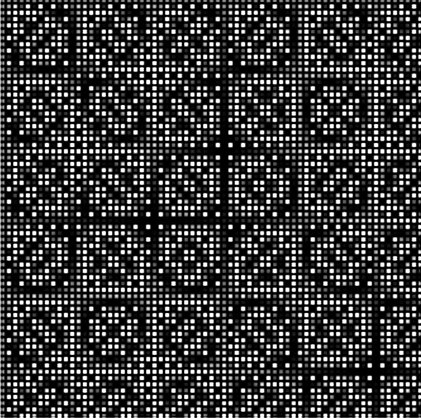Timecoloured Place: Mark V Rossi

Friday 7 October, 8pm – Mark V Rossi
(9 September – economicthoughtprojects, 29 September, 8pm – Invisible Alan & Dominic Hislop)
Exhibition runs until 29 October.
The third event of Timecoloured Place presents Mark V Rossi whose work is concerned with themes of aesthetic failure and the ambiguity of sounds and what they signify. His interests are mediated through music technology and he produces compositions from a combination of sound synthesis; acoustic sources and ‘on-the-fly’ code modification. Mark will perform a series of works using a variety of predetermined processes. Some of the processes will be intuitive, using real objects; others will be counter-intuitive synthetic processes, resulting in a collapsed aesthetic. Both approaches will posses some resemblance, from aural sounds to mimetic gestures, with a view to exploring ‘post-digital’ [1] aspects of computer-mediated music.
This is the third in a series of events held as part of Timecoloured Place. The exhibition consists of artworks installed in the gallery by Henderson Six, a small book with the work of J.G.Ballard and Patrick Chapman, a turntable which plays the special edition (1/5) vinyl record pressed for the opening night by economicthoughtprojects with newly commissioned works from ETP, Machinefabreik, The Plumber Anders Quatret and Music for One and a free EP by Invisible Alan launched on September 29th.
Henderson Six develops custom software designed to be unpredictable and dynamic. The software acts as a provocative interface that encourages the viewer to re-experience a familiar act or phenomenon. ‘Radius Music’ directly explores musical composition and performance, collapsing both processes into a simultaneous and real-time action. The unpredictability comes from the interactions of visitors to the gallery who, intentionally or not, influence the sounds and subsequent visuals of the performance, simply by being in the same physical space.
Russell Hart of economicthoughtprojects presented ‘The O’Sullivan Versions,’ a series of four newly commissioned sound works in response to a 1951 recording by Alan Lomax of an Irish Ballad. A number of short video works were played during the presentation including ‘The Amen Break’ by Nate Harrison, ‘Tape Reconstruction for Nixon and Haldeman’ by Allan Hughes and ‘MisinforMation’ by Mordant Music and BFI.
Invisible Alan and Dominic Hislop presented a call and refrain in music and video reflecting the experimentation and the careful culturing of modern technology through a process of trial and error with sound and visual technology. The call was the EP, entitled ‘Chubby Little Nerd’, which was released on the evening. Hislop’s videos were a response or refrain to this musical call reflecting a rummage through the debris of modern computer and social technology featuring public spaces, mannequins, first generation video games and abandoned shopping malls mirroring Ballardian concerns through visual composition.
The book, which forms part of this exhibition, contains a story and poetry. The story is ‘Prima Belladonna’ (1956), the first short story J.G. Ballard published. The poetry includes a poem entitled ‘Background Radiation’, a newly commissioned piece by Patrick Chapman. From The Complete Stories of J.G. Ballard, the story presents a futuristic world that deals with familiar psychological states: fear, obsession and anxiety, alongside the unfamiliar, exotic technology employed – in this case, ‘chloro-flora’. Chapman’s poem, written in 2011, responds to Ballard’s themes across more than half a century. It will appear in his next collection, A Promiscuity of Spines: New and Selected Poems, expected in 2012 from Salmon.
Because of our preconceived ideas or expectations, no place can be experienced objectively. Every place holds associations – physical, historical, mythical and emotional – imagined or otherwise. Everywhere we go we expect to encounter certain ideas, conversations; a particular linguistic infrastructure and aesthetic system.
Places where we encounter visual art, literature or music hold similar attachments and are conditional on fulfilling a pre-existing set of circumstances associated with audience interaction, communication and accessibility. ‘We live in frameworks and are surrounded by frames of references,’ [2] claimed Robert Smithson. In order to develop a post-industrial concept of place, he developed the concepts of dislocation and displacement as a method of site-specific art.
A walk down a street today, with its numerous signs and advertisements selling new desires and alternative worlds, provokes and deepens this sense of dislocation, according to J.G.Ballard, who observed that ‘reality has become a mass of competing fictions.’ [3] Our own realities have become the responsibility of the imagination.
So, what if we are to play with expected ‘codes of practice’? What happens when art or literature is placed in unexpected sites? What if our presence in a particular space at a particular time creates the artwork we are viewing? What if this work is accessible globally, every 10 minutes? How much does the site itself, as the place where we encounter artworks, affect the meaning of the work? How does it affect our direct experience, or the memory of the work?
Timecoloured Place is an attempt to play with the inherent uncertainties of the ‘site-specific’, bringing together science fiction from the 1950’s, contemporary poetry, live soundscapes created in real time and accessible everywhere, new sound works based on old recordings and visuals, which use technology to create, reinvent or breakdown. The exhibition brings together disparate practices that resonate on a collective level in order to destabilise your expectations or preconceived ideas and might even take you by surprise. But then again, maybe you knew that already.
Oonagh Young Gallery acknowledges the financial support of the Arts Council in making this exhibition possible. We would like to thank the Ballard Estate for permission to print ‘Prima Belladonna’ from The Complete Short Stories
[1] Kim Cascone, The Aesthetics of Failure: “Post-Digital” Tendencies in Contemporary Computer Music, Computer Music Journal.
[2] Rober Smithson, in Nancy Holt, ed.,The Writings of Robert Smithson (New York; New York University Press, 1979)
[3] J.G.Ballard, South Bank Show, ITV, London, Sept 17th, 2006. Television
Liberty Corner
Dublin 1
